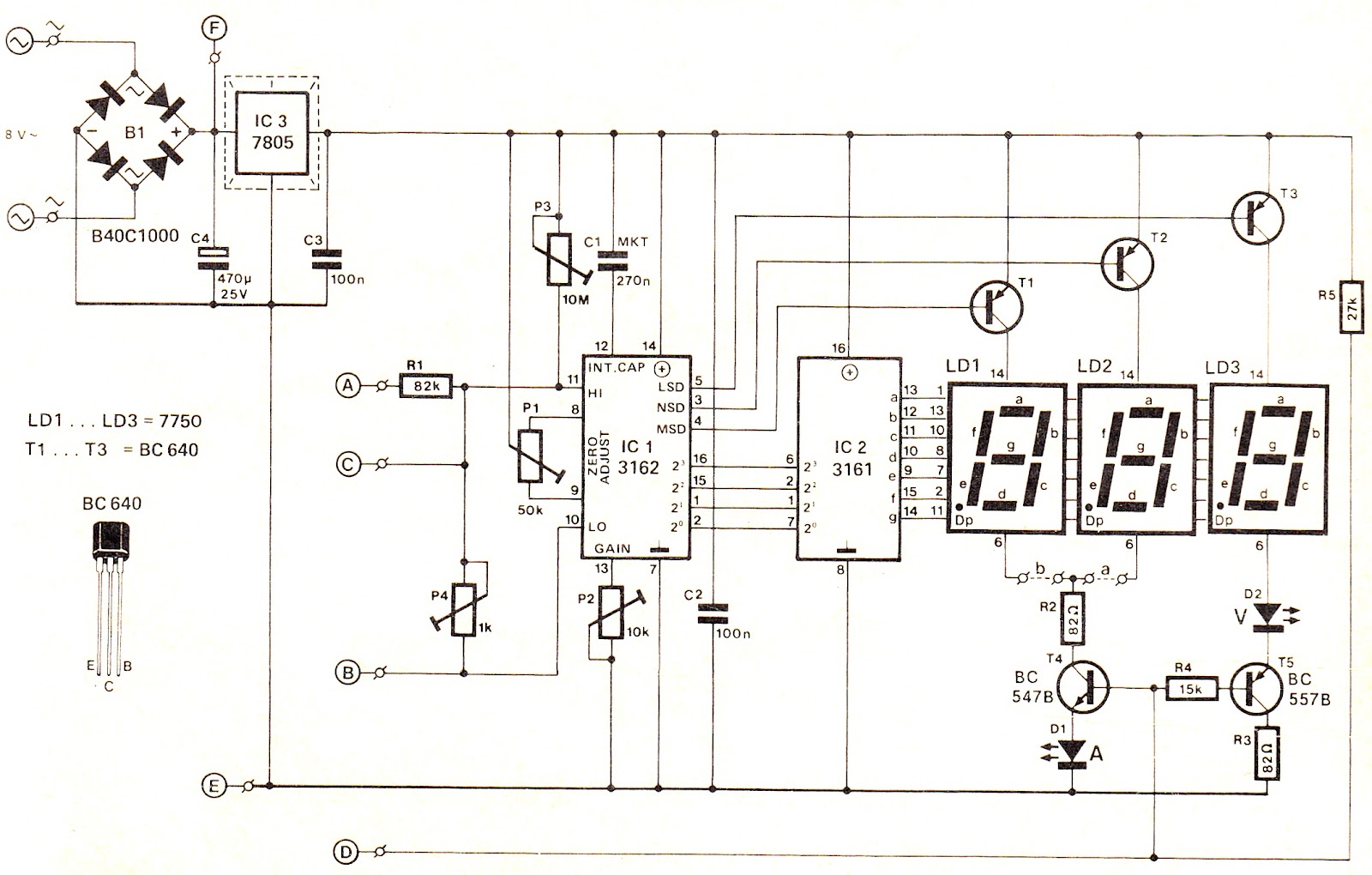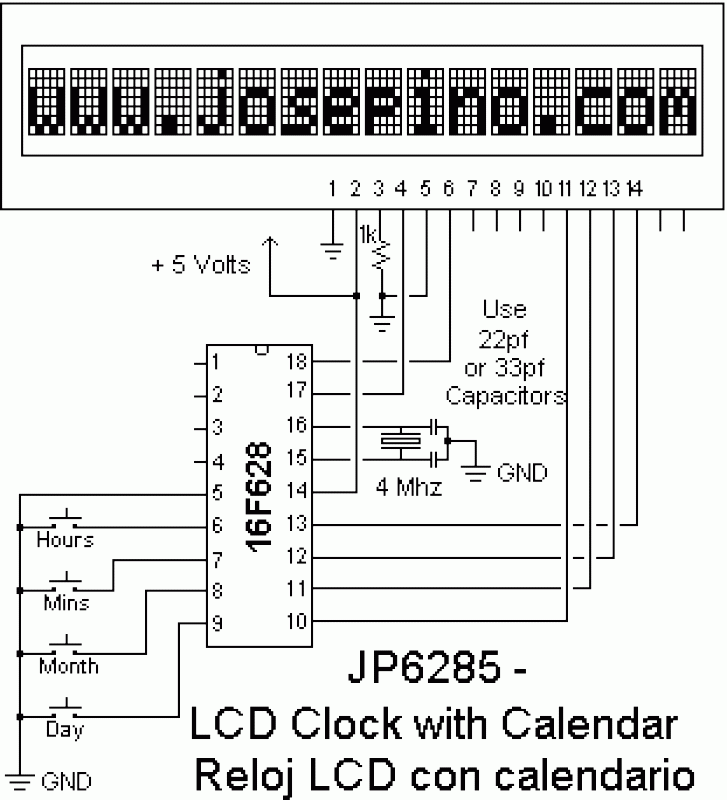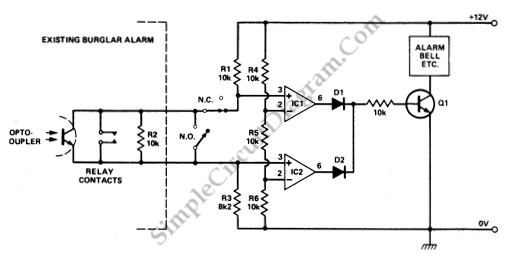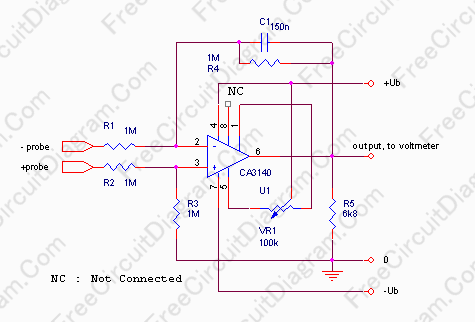
Alarm Digital Clock-DS1307
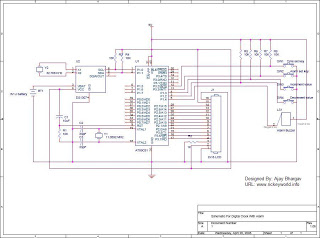
The DS1307 is a hardware real-time clock that operates using the I2C protocol. It features improved graphics with a traditional alphanumeric LCD (model HD44780). Icons indicate the status of the Alarm ON/OFF state, enhancing the visual appeal of the clock. The circuit diagram for the digital clock shows that a 2x16 LCD is connected to port 2 of the AT89C51 microcontroller. Pin P1.0 of the microcontroller provides the SCL (serial clock) and pin P1.1 serves as the SDA (serial data) for I2C communication. Upon powering on, the clock displays the default date and time, which can be adjusted to the user's preference. Once set, a backup battery ensures the clock continues to function even in the absence of external power. The acknowledgment process requires the receiver to confirm the successful reception of data by pulling the SDA line low after the sender sets it high. The source code, written in assembly language, implements the I2C protocol and is compatible with the Keil development environment. The Clock.asm and Clock.hex files are available for programming the microcontroller. The digital clock schematic can be downloaded in PDF format. For users wishing to modify the code without access to the A51 Macro assembler or Keil, disassembling software is available for download to facilitate code editing.
The DS1307 real-time clock module is designed for precise timekeeping applications, utilizing the I2C communication protocol for seamless integration with microcontrollers such as the AT89C51. The connection of the 2x16 HD44780 LCD to port 2 allows for clear display of time and status indicators. The microcontroller's P1.0 and P1.1 pins serve critical roles in the I2C communication, where P1.0 acts as the serial clock line (SCL) and P1.1 as the serial data line (SDA). This configuration enables efficient data transfer between the microcontroller and the DS1307, allowing for real-time updates of the displayed time.
Upon initialization, the DS1307 provides a default date and time, which can be modified through the microcontroller's programming. The inclusion of a backup battery ensures that the clock maintains its settings and continues to keep time accurately, even during power outages. The acknowledgment process within the I2C protocol is essential for verifying data transmission, where the receiver signals successful data reception by manipulating the SDA line.
The assembly source code provided for this application is tailored for the Keil environment, allowing for straightforward programming of the AT89C51 microcontroller. The availability of the Clock.asm and Clock.hex files facilitates easy deployment of the digital clock functionality. For those interested in customizing the code, disassembling software is recommended, enabling users to modify the existing hex file to suit their specific needs. Additionally, the schematic diagram in PDF format serves as a valuable resource for understanding the circuit layout and connections, providing a comprehensive guide for anyone looking to replicate or enhance the digital clock project.DS1307 is a hardware realtime clock, which works on I2C protocol. Better graphics using the same old fashioned alphanumeric LCD (type HD44780). Icons which shows the status for Alarm ON/OFF state, which gives a nice and cute look to the clock. Circuit diagram for the digital clock. 2x16 LCD is connected to the port 2 of AT89C51. P1. 0 of uC will pr ovide the SCL (serial clock) and P1. 1 SDA (serial data) for I2C communication. When the power supply is switched on it will give you the default date and time, but later you can change it to the desired value. After setting once, the backup battery will keep the clock ticking even after the power is not there.
Acknowledgement-After sending of one byte of data the reciever has to acknowledge the sender for the successful reception. for this the sender make the SDA line high and reciever pulls down the SDA low, which tells the sender that data has reached safely.
Now the source code written in assembly, basically implements the I2C protocol. the assembly source written for Keil. Download for Clock. asm and the Clock. hex file for programming the controller. Digital Clock Schematic is available in PDF format can be downloaded. For ppl who wants to edit the code but they dont have the A51 Macro assembler/Keil, they can use the following software to disassemble the hex file and change it according to their need. The disassembling software can be downloaded from following link: 🔗 External reference
The DS1307 real-time clock module is designed for precise timekeeping applications, utilizing the I2C communication protocol for seamless integration with microcontrollers such as the AT89C51. The connection of the 2x16 HD44780 LCD to port 2 allows for clear display of time and status indicators. The microcontroller's P1.0 and P1.1 pins serve critical roles in the I2C communication, where P1.0 acts as the serial clock line (SCL) and P1.1 as the serial data line (SDA). This configuration enables efficient data transfer between the microcontroller and the DS1307, allowing for real-time updates of the displayed time.
Upon initialization, the DS1307 provides a default date and time, which can be modified through the microcontroller's programming. The inclusion of a backup battery ensures that the clock maintains its settings and continues to keep time accurately, even during power outages. The acknowledgment process within the I2C protocol is essential for verifying data transmission, where the receiver signals successful data reception by manipulating the SDA line.
The assembly source code provided for this application is tailored for the Keil environment, allowing for straightforward programming of the AT89C51 microcontroller. The availability of the Clock.asm and Clock.hex files facilitates easy deployment of the digital clock functionality. For those interested in customizing the code, disassembling software is recommended, enabling users to modify the existing hex file to suit their specific needs. Additionally, the schematic diagram in PDF format serves as a valuable resource for understanding the circuit layout and connections, providing a comprehensive guide for anyone looking to replicate or enhance the digital clock project.DS1307 is a hardware realtime clock, which works on I2C protocol. Better graphics using the same old fashioned alphanumeric LCD (type HD44780). Icons which shows the status for Alarm ON/OFF state, which gives a nice and cute look to the clock. Circuit diagram for the digital clock. 2x16 LCD is connected to the port 2 of AT89C51. P1. 0 of uC will pr ovide the SCL (serial clock) and P1. 1 SDA (serial data) for I2C communication. When the power supply is switched on it will give you the default date and time, but later you can change it to the desired value. After setting once, the backup battery will keep the clock ticking even after the power is not there.
Acknowledgement-After sending of one byte of data the reciever has to acknowledge the sender for the successful reception. for this the sender make the SDA line high and reciever pulls down the SDA low, which tells the sender that data has reached safely.
Now the source code written in assembly, basically implements the I2C protocol. the assembly source written for Keil. Download for Clock. asm and the Clock. hex file for programming the controller. Digital Clock Schematic is available in PDF format can be downloaded. For ppl who wants to edit the code but they dont have the A51 Macro assembler/Keil, they can use the following software to disassemble the hex file and change it according to their need. The disassembling software can be downloaded from following link: 🔗 External reference

